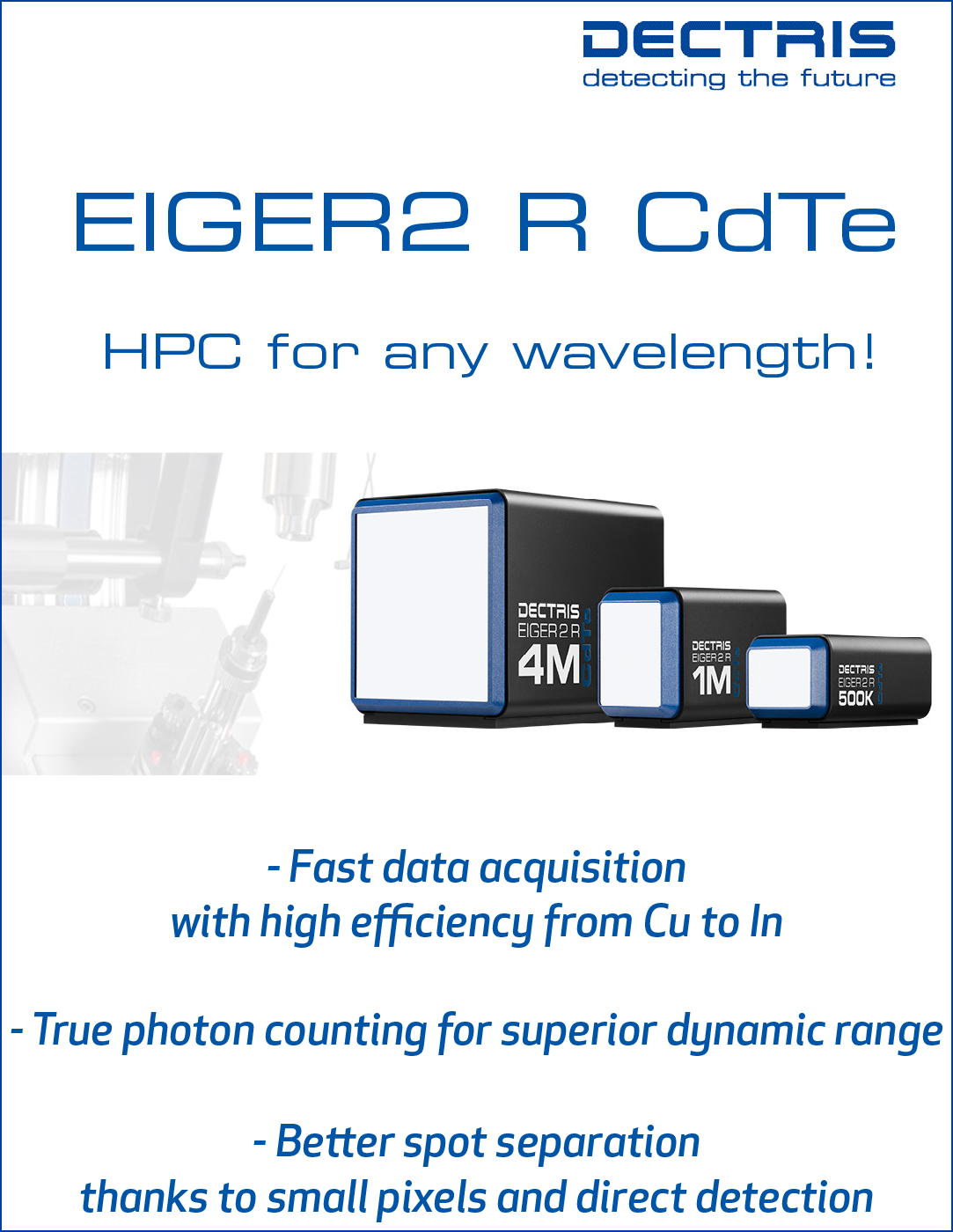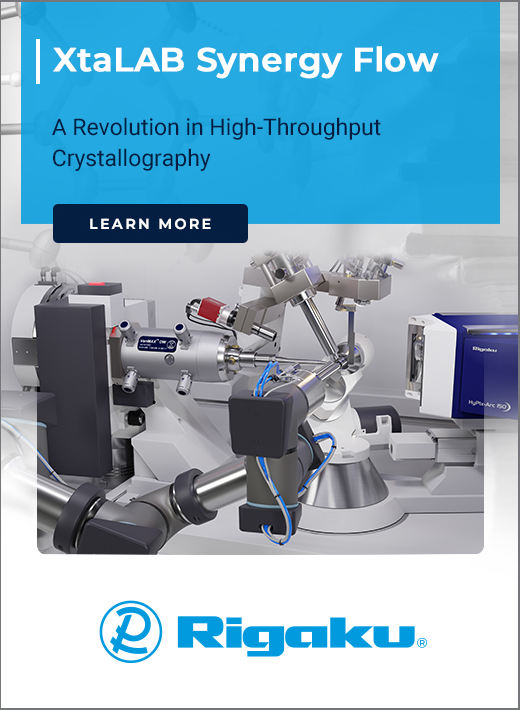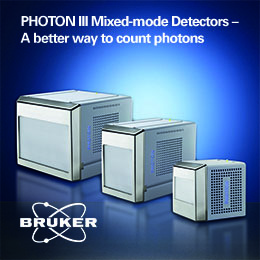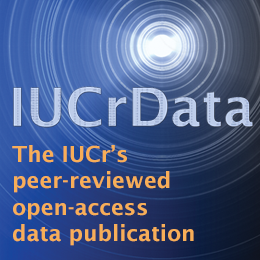
Feature article
Serial crystallography at XFELs and synchrotrons
![Fig1 [Fig1]](https://www.iucr.org/__data/assets/image/0008/150569/Fig1.jpg)
Figure 1. Graduate students prepare a crystallography beamtime at the Linac Coherent Light Source (LCLS) at SLAC in 2015.
It is now about a decade since the first results of crystallography at an X-ray free-electron laser (XFEL) were published [1], so perhaps the dust has settled a little. For summaries of the considerable literature, and at the risk of offending contributors who may be overlooked, I refer readers to reviews of structural biology at XFELs generally [2,3] and to the following summaries of crystallography at the major hard X-ray FELs in California (the LCLS [4]), South Korea (PAL [5]), Switzerland (SwissFEL [6]), Germany (European XFEL – EuXFEL [7]) and Japan (SACLA [8]). All have now turned their attention to the COVID-19 threat, as briefly discussed below. Additional references can be found through keyword searches in, for example, the open Google Scholar search engine, which include the most recent contributions to the rapidly growing COVID literature.
A brief history of serial crystallography
XFELs provide intense pulses of soft or hard X-rays with pulse durations between about one femtosecond (fs) and perhaps 100 fs. The repetition rate of most is about 100 Hz (often limited by the readout rate of the detector) but will soon increase to the kilohertz region and may be varied. A special case concerns the megahertz rate of the EuXFEL, which is discussed below. The unsuitability of the XFEL for standard crystallography owing to instabilities was immediately evident when work started at the LCLS in 2009, with up to 15% variation in beam intensity between shots, 0.1% bandwidth and a spikey time-dependance to each pulse. In addition, one needed to record and save 120 diffraction patterns per second using a fully coherent beam, a few micrometres in diameter, which drilled holes instantly in stainless steel. (A typical shot contains about 1012 incident photons, about the same as provided by many synchrotrons in one second.) New area detectors with a much larger dynamic range were needed. The aforementioned issues were dealt with by developing the method of serial crystallography (SC, or SFX for serial femtosecond crystallography), in which thousands of hydrated randomly oriented micrometre-sized crystals are exposed successively. Each exposed microcrystal is destroyed by the beam after providing a useful Bragg diffraction pattern before the femtosecond X-ray pulse ends. The diffraction conditions for each microcrystal are determined later by computer analysis, and the serious scaling problem which arises owing to differences in crystal size and orientation must then be addressed. Given these fluctuations in both beam and sample conditions, it is remarkable that sufficiently accurate structure-factor measurement is now possible to allow both native phasing and time-resolved crystallography at XFELs. Preliminary results from the even more difficult time-resolved small-angle X-ray scattering (SAXS) technique look promising. A large effort from many collaborating research groups and beamline scientists around the world has contributed to the current state of affairs, where, after a few days of beam time, small groups of users can now work with local staff to obtain and analyse high-quality diffraction data from protein microcrystals at room temperature with negligible radiation damage, as seen in Fig. 1.
The early excitement over the ability of this 'diffract-then-destroy' femtosecond snapshot crystallography to outrun damage has led to a deeper understanding of damage processes (distinguishing primary initial ionization from later irreversible nuclear motion) and the principle has held up provided that sufficiently brief pulses (perhaps 20 fs in duration) are used. In brief, both Bragg diffraction and a limited amount of ionization occur before the termination of a sufficiently brief X-ray pulse, after which the photoelectron cascade destroys the crystal. Resolution degrades with increased pulse duration [1]. Meanwhile, the strengths of the method – the ability to solve room-temperature structures without significant damage and hence to record protein dynamics (without immobilizing the structure by cooling) under near-physiological conditions – have been much more fully developed. This has opened the way to structural studies under controlled environmental conditions, such as temperature changes, photon exposure of light-sensitive proteins in pump–probe studies and diffusion of ligands into protein microcrystals using time-resolved snapshot diffraction. The subsequent transfer of this SC technique to synchrotrons since 2009 for similar studies of protein dynamics, enabled by new fast detectors and diffraction-limit upgrades, is one of the most important impacts that XFEL research has had on the field of protein crystallography.
The beginnings of SC are almost as old as crystallography itself. As soon as the early crystallographers in the 1920s attempted to merge the data from more than one crystal, or from different areas of the same large crystal, many of the scaling issues now dealt with in modern SC arose. This merging was carried out in order to share the damaging radiation dose over a larger volume; generally, these scaling issues were addressed by the standard statistical methods of maximum likelihood optimization. When using film recording with the oscillation method, the problem later arose of merging partial reflections (those not integrated fully in angle across the rocking curve) from one crystal with those from another. This problem was addressed by defining a 'degree of partiality' in a 'post-refinement' approach pioneered by Michael Rossmann and his group (Purdue University, West Lafayette, IN, USA). A new form of fast SC for microcrystals was developed around 2004 in preparation for use at the first XFELs, as discussed below.
For SFX, the solution to the data-analysis problem with multiple crystals was to adopt a Monte Carlo integration approach [9], summing the same indexed reflections from different microcrystals and thereby averaging over all the large statistical fluctuations from several independent sources. These include size variation among the crystals, shot-to-shot beam-intensity variations, the wavelength distribution in the beam and the orientation variation of crystals at each reflection. With enough diffraction patterns from different microcrystals in random orientations, sampling would occur at a sufficient number of points across the rocking curve to perform the required angular integration. The error (R split) can then be seen to fall as k/√N for N patterns, with k a constant. We recall that the height of a Bragg peak is proportional to the square of the number of molecules in the crystal, while the angle-integrated intensity is proportional to the number of molecules, and inversely proportional to the size of the unit cell. Since that time, many improvements over this global averaging approach have been published with the effect of reducing k through some form of iterative modelling of the rocking curve or spectrum. Many of these improvements are now incorporated as options in several software packages, including the DIALS and CrystFEL suites, to which the reader is referred for details of data analysis in SC. This includes methods to resolve the indexing ambiguity which arises when merging data from different crystals [10]. Prior to indexing and merging, useful data must be isolated ('hit finding') from the total dataset, which will include blank shots where the beam misses the crystals, the background must be treated and detector corrections must be applied. Merging depends on autoindexing methods, which may involve sparse datasets, either in the sense of showing too few Bragg spots to allow indexing by conventional macromolecular crystallography (MX) software or by showing very weak reflections or both. There have recently been dramatically effective approaches to both of these problems [11, 12]. The use of the expectation maximization and compression (EMC) algorithm employs a similar approach to that used for single-particle XFEL data merging: it does not assign crystallographic indices but treats the entire nanocrystal as one molecule. This adds the parameter of crystal size to the three angular-orientation unknowns in single-particle analysis, resulting in a powerful approach for data from weaker storage-ring sources for the very smallest crystals of small proteins (which give stronger Bragg spots than larger molecules), but it comes with a very large computational cost. A second method of indexing sparse patterns, for somewhat larger crystals producing sparse patterns, collects pairs of reflections and the angle between them and then searches a look-up table for the most probable orientation.
As at synchrotrons, most phasing for SFX is done using molecular replacement; however, native sulfur anomalous diffraction (SAD) phasing has been achieved using an XFEL, as has isomorphous replacement. New possibilities for phasing arise [3] as the coherence width of the beam typically exceeds the dimensions of the crystals, producing interference effects between Bragg reflections. (Conventional Bragg crystallography requires only that the coherence width across the beam be larger than the unit cell, not the crystal.)
Closely linked to the data-analysis problem has been the sample-delivery problem, and it has been fascinating to see how the SC methods first developed for XFELs before 2009 have now been taken over successfully and often improved on at most synchrotrons. The term 'serial crystallography' has come to encompass methods as varied as those which run tens of thousands of hydrated micrometre-sized crystals in single file in a liquid water jet across the beam to those at synchrotrons where multiple exposures are recorded using different beam positions on a single large crystal mounted on a gonimeter. The term also includes the increasingly popular methods where hundreds of small crystals lie on a membrane spanning a semiconductor chip, which is raster scanned across the beam. The success of the synchrotron work reflects the fact that most processes in structural biology occur on a time scale of microseconds or longer, so that the much higher time resolution of XFELs is usually more valuable for reducing radiation damage, allowing the study of reactions at room temperature, than for its speed. (Study of the early stages of reactions in light-sensitive proteins, however, does benefit from femtosecond time resolution.) The experimental origins of fast SC can be traced to an early proposal [13] to inject bioparticles in a continuous single-file stream across a beam for diffraction analysis using a Rayleigh jet. The first tests of such a system with protein microcrystals were undertaken at the Advanced Light Source [14]. A liquid-injection system was developed for the first SFX experiments in 2009 [1] by incorporating a gas dynamic virtual nozzle (GDVN) into the vacuum chamber of the world’s first XFEL, the LCLS at SLAC (see Fig. 2). That system was immediately modified to allow optical laser pump–probe measurements suitable for studies of photosynthesis. Mixing jets were also developed soon after [15] to allow time-resolved X-ray snapshots to be recorded during a chemical reaction, using the mix-and-inject serial crystallography or 'MISC' method [16, 17]. This allows the XFEL to outrun both radiation damage and diffusion, for sufficiently small micrometre-sized crystals. It is understood that these studies are limited to molecules and enzymes that remain chemically active in crystalline form (but with slower kinetics [16, 17]), a result established as long ago as 1969.
![[Fig2]](https://www.iucr.org/__data/assets/image/0018/150570/Fig2.jpg)
Sample-delivery methods
Since that time, a plethora of different sample-delivery schemes have been developed for the three main modes of SC operation: static structure determination for protein microcrystals, such as the G-protein coupled receptor (GPCR) drug targets; pump–probe studies on light-sensitive protein microcrystals, as shown in Figs. 3 and 4 (movie) [18]; and mixing-jet experiments on microcrystals for the study of chemical dynamics, such as time-resolved imaging of enzymes [16, 17]. In addition, similar sample-delivery methods were required for closely related XFEL techniques such as single-particle analysis (with one virus per shot), fast spectroscopy and time-resolved solution scattering. In each case, one must consider the need for a hydrated sample environment, possibly in vacuum (or helium gas) together with possible laser pumping or solution-mixing facilities, while delivering over a thousand samples per second across the beam. These are demanding constraints, with the ultimate goal of minimizing sample waste between shots and obtaining a high hit rate. Sample-delivery methods include scanned stages ('fixed target' systems), liquid jets, double-focusing jets, viscous jets, conveyor-belt systems, electrospray, acoustic levitation, mix-and-inject systems and electrokinetic injectors. For some modes (such as pump–probe work on light-sensitive proteins), a completely reliable system for XFELs that wastes little protein has yet to be developed. SFX at the EuXFEL (and at LCLS II) is complicated by very high pulse repetition rates of 1 MHz or more (in separated pulse trains). For static structure determination, the simplest and most reliable system for protein microcrystals that can be grown in lipid cubic phase (LCP) appears to be the slow-moving LCP jet [19], which does not suffer from clogging and wastes little protein. Scanned stages, with their very high hit rate, have been highly successful at lower repetition rates and have involved a variety of robotic or flow-based loading systems. A system for mixing droplets onto chip-mounted microcrystals can also be found [20], in addition to a simple mixing jet which is easy to assemble and does not require lithography or 3D printing [21]. A conveyor-belt (tape drive) system has been described, which provides high hit rates. Conveyor belts, with droplets dispersed in single file along them, allow the belt speed across the beam to be adjusted to match the XFEL repetition rate. Work toward synchronized droplet jets (triggered by the XFEL photocathode signal) continues, including a system that inserts long slugs of oil between droplets of buffer containing microcrystals. The oil travels across the beam between X-ray pulses, conserving protein [22] (see Fig. 5). Very recently, this system has succeeded in producing diffraction patterns at the LCLS synchronized with droplets containing protein microcrystals. For the future, with ever-increasing repetition rates it may be that only the liquid jets are fast enough. (For the GDVN, the free-running droplet generation rate is about 1 MHz.) Current XFEL upgrades to 1 kHz or more are common, with data acquisition limited by detector readout speed. These microfluidic systems and mixing nozzles are increasingly fabricated using two-photon 3D laser printers with sub-micrometre resolution, as shown in Fig. 6. It is remarkable that the same 3D CAD drawing can be used both to 3D print the device and for fluid-dynamics computer simulations, with good agreement between them. The sub-micrometre resolution of two-photon 3D printers has greatly contributed to making jet delivery highly reproducible for monodispersed particles. Alternatively, XFELs can be intentionally run at reduced repetition rates to allow scanned-sample systems to be used with their very high hit rate. Viscous jets, which avoid clogging and are perhaps the simplest and most reliable system, have recently been used for time-resolved pump–probe work [23] with low background and protein waste, and should be usable up to about 1 kHz. The segmented flow system holds promise for high-repetition-rate sample delivery while conserving protein. References to articles on all these systems, including the advanced 'Roadrunner' scanned-stage system, can be found in two recent comprehensive reviews (with over 200 references) of XFEL sample delivery for biology [24, 25]. Examples of well-developed systems and results for time-resolved SC at synchrotrons are described in the following references [20, 23]. Systems for static SC are now becoming available at most synchrotrons worldwide.
![[Fig3]](https://www.iucr.org/__data/assets/image/0019/150571/Fig3.jpg)
Time-resolved structural analysis
As a result of all these developments in data analysis, XFEL sources and sample-delivery methods, we have seen very rapid progress over the last 10 years in the SC method, both at XFELs (for SFX) and at synchrotrons (SC). For XFELs, this has allowed for static structural determination of crystals grown in vivo, perhaps of submicrometre size, and from challenging targets such as membrane proteins, grown in the viscous LCP sample-delivery medium. Many radiation-sensitive GPCR drug targets have been solved (13 new XFEL structures since 2013), in addition to supramolecular assemblies such as ribosomes. For time-resolved XFEL studies, the small crystal size allows for rapid diffusive saturation in mix-and-inject analysis of biochemical reactions, with microsecond diffusion times, shorter than reaction times, for sufficiently small crystals. Here the MISC technique is proving powerful for structural analysis of intermediates, allowing a structure to be associated with each time point in the catalytic cycle of an enzyme, for example, as identified from spectroscopic or electron paramagnetic resonance (EPR) studies of the kinetics. A recent MISC movie of the progress of the RNA riboswitch through its four intermediate states while regulating gene expression provides a good example [26]. The method has also shown us the mechanism by which the β-lactamase enzyme gains resistance to an antibiotic drug [16]. The heavily studied light-sensitive macromolecules rhodopsin, photosystem I and II, and PYP have all produced spectacular multi-frame 'movies' of conformational change owing to light absorption. Here a small fraction of molecules in the crystal respond to the sharp optical trigger to follow one or more reaction paths, producing changes in the Bragg intensity with delay between the trigger and the XFEL snapshot. The trigger-delay-snapshot process is repeated until all orientations of microcrystals have been sampled, and for many delays, each delay providing one frame of a movie. Based on the accurately known structure of the unexcited crystal, a combination of single-value decomposition analysis [16] and modelling can extract a time-resolved image of the molecular motion. We note, however, that these 'movies' of kinetics, recovered from the time-dependence of Bragg spots, show a spatial periodic average of the amounts of the various photoactivated species present at each time point and not a true molecular movie of, for example, bond formation and breakage, which occurs on the much faster time scale of dynamics. Nevertheless, XFEL movies of molecular machines have now been published with time resolutions between 150 fs and seconds. In these studies of light-sensitive proteins it has often proven difficult to accurately calibrate and provide the correct pump-light fluence. For studies of microcrystals into which small molecules are diffused, similar considerations apply regarding the interpretation of crystallographic 'movies'. To obtain a sharp trigger to initiate a reaction in these systems, it has been suggested that optogenetics or caged compounds may be used to render them light sensitive.
Figure 4. A movie of the ultrafast early phase of the photoreaction in PYP shown in Fig. 2 is shown on a time scale spanning from 100 fs to 10 ps. This time scale is covered by ten time-resolved X-ray datasets obtained after reaction initiation by ultrafast blue laser pulses from a powerful femtosecond laser. The pump–probe TR-SFX data were all collected on needle-like PYP microcrystals grown with malonate as the precipitant, and injected into vacuum by a liquid injector to interact with the laser and the X-ray pulses. Datasets for the first nine time delays were collected at the LCLS with a 120 Hz X-ray pulse repetition rate, the last time point (10 ps) was obtained at the EuXFEL using 564 kHz X-ray pulses. Structural models of PYP were determined at each time delay by interpreting so-called extrapolated electron-density maps where the extent of reaction initiation was expanded to 100%. The movie was produced by ‘UCSF Chimera’ by morphing between the ten resulting structural models at consecutive time delays [18].
2020 COVID research
Since March 2020, the five worldwide XFELs have begun to offer special beam times for COVID-19 research. For crystallography, this has mainly meant solving the crystallized component proteins of the virus; however, more ambitious studies are also planned, including time-resolved diffraction. XFELs can offer room-temperature structures without significant damage, the ability to study nanocrystals and snapshot imaging of kinetics. Several projects have focused on the possibility of developing protease inhibitors, as for the virus responsible for AIDS. Many proposals for inhibiting viral enzymes have been described in the literature, as outlined in a recent review in the IUCr Newsletter. On 22 July, there were 47 COVID structural models contributed to the PDB by cryo-EM and 250 by MX. At least five beam times had been awarded at LCLS alone for COVID work, some now completed successfully. (The National Science Foundation Science and Technology Center 'BioXFEL', devoted to the application of XFELs to structural biology, is a significant contributor.) Publications can be found using the keywords COVID and XFEL in the open Google Scholar search engine, in addition to the various pre-publication archives.
![[Fig5]](https://www.iucr.org/__data/assets/image/0020/150572/Fig5.jpg)
The future of serial crystallography
This new field – imaging protein kinetics by SC at XFELs or synchrotrons – is now entering its most exciting phase. As sample-delivery methods mature we are bound to see many more time-resolved studies of molecular chemistry with atomic spatial and femtosecond time resolution, recorded under near-physiological conditions. From these it should be possible to extract both kinetics and (by modelling) dynamic mechanisms, energy landscapes, rate coefficients and activation barriers for reactions, and intermediate structures for both reversible and irreversible (catalyzed) reactions. In addition to associating a structure with each stage of the reaction kinetics, time-resolved serial crystallography (TR-SC) is unique in providing the sequence of events in a reaction – it can tell us which species came first in a multi-step reaction when times are short. New reaction pathways might be discovered, intermediate states suitable as drug targets identified and the images used to refine the force fields used for modelling over a larger range of times. The MHz repetition rate of the EuXFEL allows one to collect in one hour data which would take days to collect at the other XFELs worldwide. This raises the exciting possibility of multi-parameter data collection, in which a wide variety of chemical conditions are varied in real time during data collection, such as temperature, pH, applied potentials, ligand diffusion, terahertz pumping and the use of light-sensitive caged compounds to trigger reactions. Two very recent intriguing new ideas have also been investigated: that XFEL diffraction data report the correct oxidation state of heavy atoms in proteins (without the chemical reduction owing to photoelectrons in synchrotron studies) and that damage may also be outrun using sufficiently brief pulses for hard X-ray inner-shell spectroscopy. Time-resolved density maps have also been obtained during application of an electric field to proteins [27].
![[Fig6]](https://www.iucr.org/__data/assets/image/0003/150573/Fig6.jpg)
Instrumentation developments are also occurring rapidly in the field of accelerator physics, where new ideas for X-ray lasers abound in the literature. A compact XFEL, which fills a large room, is already under construction at Arizona State University [28]. This is based on spatial modulation of the MeV electron beam and use of a counter-propagating laser as a wiggler. New designs are also under consideration for a possible large machine in the UK. The companion field of XFEL SAXS is progressing rapidly, to expand studies of protein dynamics to motions unrestricted by crystal constraints. These experiments with very low signals and large backgrounds (lacking the 'Bragg boost' of crystallography) are very difficult, despite recent success in producing the desirable 'sheet jet' delivery systems. The highly stable conditions of the SAXS sample cell and beam available at a synchrotron are hard to replicate but early results from pump–probe studies of the reaction center and myoglobin are encouraging.
In summary, the development of SC at both XFELs and synchrotrons has opened up many new opportunities in structural biology, especially in the exciting new field of atomic-resolution imaging of protein kinetics, including enzyme catalysis, under controlled chemical conditions.
References
[3] Spence, J. C. H. (2017). XFELS for structure and dynamics in biology. IUCrJ, 4, 322-339.
John Spence (Department of Physics, Arizona State University, Tempe, AZ, USA) is Main Editor (Physics and FEL Science and Technology) of IUCrJ, and has recently been awarded the Gregori Aminoff Prize 2021 along with Henry Chapman and Janos Hajdu “for their fundamental contributions to the development of X-ray free electron laser based structural biology”.
Copyright © - All Rights Reserved - International Union of Crystallography








